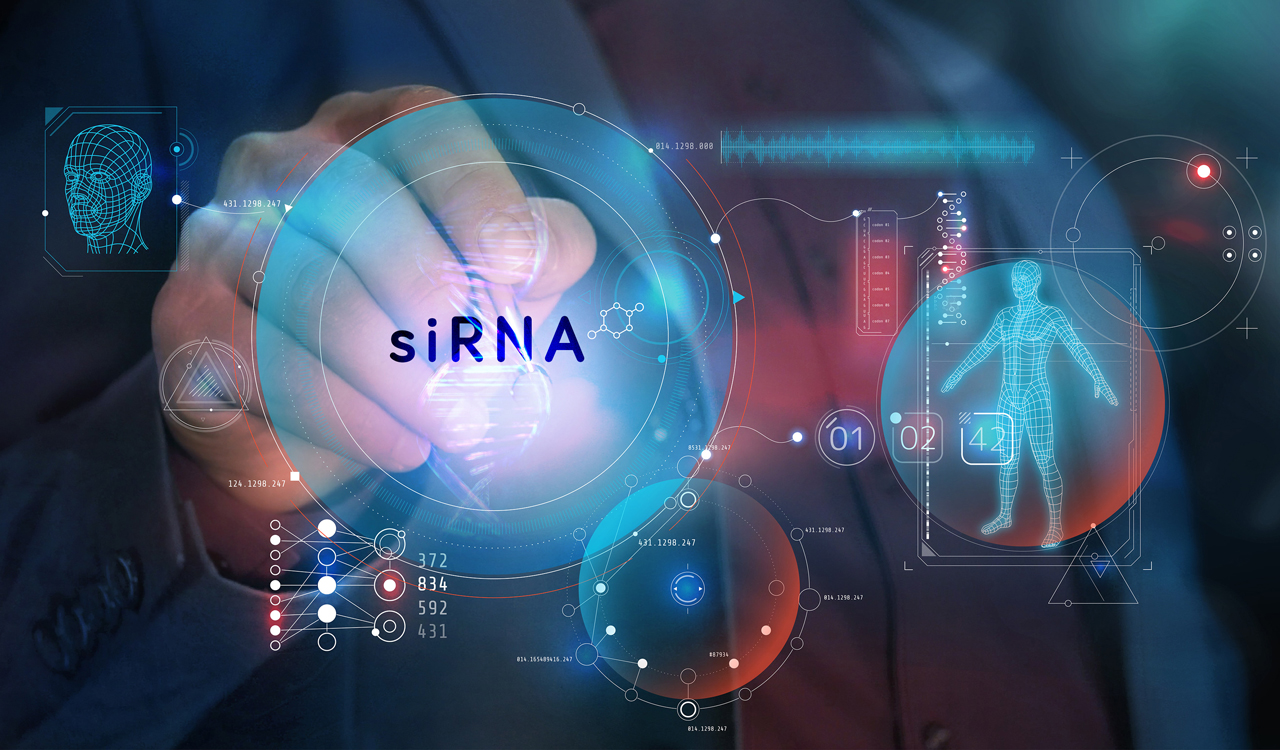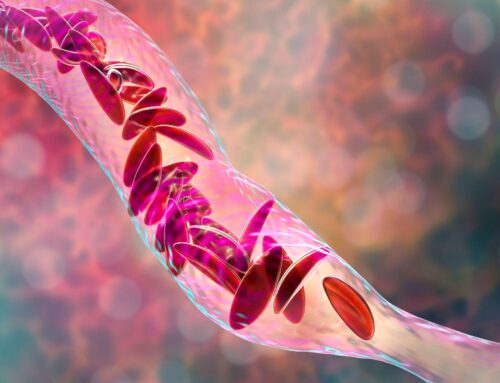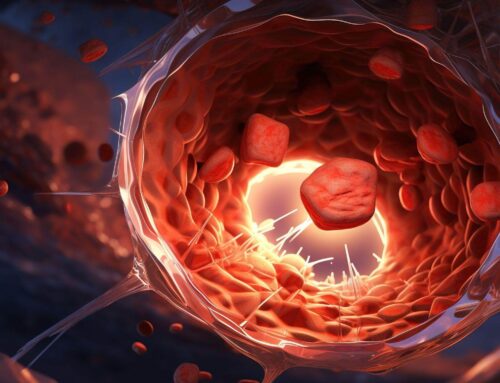Looking for something?
siRNA: From a Powerful Research Tool to Potent Therapeutic Modality

Earlier this year we celebrated the 20th Anniversary of RNA Interference in Mammalian Cells. In this article, we are going to discuss small interfering RNA (siRNA), a key mechanism that induces gene silencing in the RNAi pathway. siRNAs are highly specific, making them a powerful tool to suppress the expression of specific genes, but they did require a significant amount of development before being usable to treat disease. After nearly two decades of research and development, our community celebrated when the first siRNA-based RNAi drug gained approval by regulatory agencies to treat patients, and three more swiftly followed. Knowledge in this field is continually expanding and many more siRNA-based therapies are in development. Elements involved in creating siRNA therapeutics are continuously being developed, improved, and refined.
The Discovery of the Role of siRNA in the RNAi Pathway
The human genome is made up of approximately 3 billion base pairs of DNA which are organized in specific patterns to create tens of thousands of different genes. In each cell, only some of the genes are expressed.
Many of the genes provide instructions to create specific proteins and others (called noncoding genes) do not. The instructions are copied into mRNA, then the mRNA leaves the nucleus of the cell and enters the cytoplasm where it is translated into specific amino acids that combine to form proteins. The process of creating proteins is important because improper production or formation of proteins can cause diseases that are often debilitating and/or fatal.
RNA interference (RNAi) is a biological pathway that regulates which genes are expressed and allowed to form proteins, protects the genome from transposons (which can cause damage to the genome), and plays a role in immunity in some organisms. It also controls vital processes such as cell growth and proliferation, and tissue differentiation (1).
In the RNAi pathway, small pieces of double-stranded RNA (dsRNA) bind to Dicer, an enzyme that cleaves the RNA into fragments that are 21-23 nucleotides long. These fragments are then bound to an argonaute protein (AGO) creating a complex called RNA induced silencing complex (RISC) that separates the strands, eliminating one and retaining the other. The surviving strand of RNA is used to detect and pair with complementary mRNA molecules. Once the mRNA is bound to the RISC complex, it is cleaved and degraded, preventing protein synthesis and silencing expression of that gene. The mRNA molecules may be those that are transcribed from DNA and, in some organisms, the mRNA may come from viruses or other exogenous sources (2).
As you can imagine, uncovering this process required the efforts of multiple teams over many years. You can read an excellent detailed history of the various discoveries that illuminated the RNAi pathway here, and we will cover a few highlights that led to the therapeutic use of siRNA.
Fire and Mello first discovered that RNAi required double-stranded RNA to silence genes and published the information in 1998. They had realized that single-strand RNA produced no result in silencing gene expression, but when they injected dsRNA that coded for a muscle protein into C. elegans worms, the worm would twitch in the same way that worms carrying a defective gene would (3). Fire and Mello were awarded The Nobel Prize in Physiology or Medicine for 2006 for the discovery of this mechanism.
In the following years, it was discovered that shorter double-stranded RNA molecules, called small interfering RNA (siRNA), were effective for RNAi specificity (4, 5, 6). In 2001, Elbashir et. al proved that 21 nucleotide (nt) long dsRNA could silence genes in mammalian cells, while introducing longer strands created an interferon response, diminishing the specificity of RNAi (7, 8). This opened up the possibility of utilizing RNAi in mammalian cells and beyond.
RNAi therapeutics utilize the conserved pathway.
RNAi therapies work within this biologically conserved pathway, with slight differences. There are two RNAi modalities that knockdown expression of targeted genes: small interfering RNA (siRNA) and microRNA (miRNA). Today we are focusing on siRNA.
Synthetic double-stranded siRNA is created to match the mRNA transcript of a gene and introduced to the cell through various methods. Inside the cell, Dicer is bypassed, since the RNA is already the ideal length. The siRNA is bound to the argonaute protein and the RNAi mechanism proceeds as it naturally would. The siRNA unwinds, becoming two separate strands. One strand is released and degrades while the other is retained and forms the RISC complex which finds and binds with the target mRNA, then cleaves the mRNA which is degraded. Once in the cell, the active siRNA strand is stable in the RISC complex for weeks, making it an excellent method for sustained, efficient gene-knockdown.
The problem has been in getting siRNA into various tissues throughout the body since one of the most difficult aspects of creating siRNA-based drugs has been developing a safe, effective delivery method. Furthermore, methods that work for one type of cell do not always translate into safe, effective delivery into other cell types. siRNAs are relatively large and have a negative charge, which makes them difficult to transport across the cell membrane. Additionally, they are rapidly excreted (sometimes within just a few minutes)(9) which prevents them from accumulating in the targeted cells or tissues (10). Naked RNA is also easily degraded in the bloodstream and stimulates the immune system to produce interferon and inflammatory responses (9, 11). Many of these problems can be solved by conjugating siRNAs into other molecules or incorporating them into complexes (9).
Chemical modifications have been a useful development in creating safe, effective siRNA therapeutics, as they can increase stability and nuclease resistance, facilitate delivery and cellular uptake, reduce off-target effects, and modulate binding strength with the target RNA. However, they may also reduce silencing efficiency as a trade-off (11).
Naked siRNA, which do not have a delivery system, can be modified to resist degradation allowing them to circulate longer in the bloodstream. This method can be useful in the kidney (where siRNA accumulates while being filtered from the bloodstream before being excreted) as well as in the eyes and lungs (10).
Lipid and lipidoid-based nanoparticles (LNPs) are effective delivery methods. In addition to transporting siRNAs to certain targeted tissues and cells, LNPs protect the siRNA from being degraded by nucleases in the bloodstream and from being cleared as quickly as naked siRNA (10). After being intravenously injected, siRNA-LNPs accumulate in the liver, spleen, and kidneys, making these organs prime candidates for treatment. siRNA-LNPs have also been tested extensively in the treatment of solid tumors, with some promising results (10, 12, 13).
It took nearly 20 years to develop RNAi therapeutics and create safe, effective drugs. The first to gain approval was Onpattro (patisiran) which is siRNA-based and utilizes an LNP delivery method. Its approval on August 10, 2018 was widely celebrated as the culmination of years of research by teams around the world produced a result that changes the lives of people with a previously incurable disease. Since then, two other siRNA-based drugs have been approved in the United States and a fourth siRNA-based drug has been approved in Europe.
Although the first siRNA-based drug to be approved utilized LNP delivery method, the three subsequent siRNA-based drugs that gained approval use GalNAc-conjugation delivery platforms. This is because siRNA conjugates do have distinct advantages over LNPs. Drugs utilizing this delivery platform can be given subcutaneously, seem to be tolerated better, and are simpler to manufacture (9). It has superior potency and safety for the liver-targeted delivery of siRNA (10).
Currently, siRNA delivery methods have been developed to safely and effectively deliver siRNA therapies to the liver. Now, the focus of many scientists has shifted to finding methods of delivery to other tissues.
A promising approach is to modulate oligonucleotide delivery through both direct chemical modification and conjugation. Dr. Anabelle Biscans and other members of the Khovora Lab designed and identified novel conjugated siRNAs that enable safe, sustainable, and robust silencing in muscle, heart, lung, adrenal glands, and fat tissues (14, 15). Dr. Biscans discussed methods of designing siRNAs to allow for safe, efficient delivery in this informative webinar.
The Khovora Lab has also developed a chemical modification to siRNA architecture that supports potent, sustained gene silencing in the central nervous system. It is called divalent-siRNA (Di-siRNA) and an injection shows substantial distribution throughout the brain and spinal cord with minimal off-target effects and without detectable toxicity (16).
Delivery methods are a vital aspect of creating siRNA-based drugs, but there are many other important elements to consider. Many members of OTS have devoted their careers to unearthing the secrets of RNAi and gaining a detailed understanding of the facets involved in creating uses that have yet to be imagined.
The OTS Community is Deeply Committed to Advancing siRNA Research that Will Ultimately Be Used to Create Life-Changing Medications.
Here are just a few examples of the advancements being made by our OTS community.
Alnylam Pharmaceuticals has pioneered RNAi therapeutics since 2002. All three siRNA-based medicines approved by the FDA (Onpattro, Givlaari, and Oxlumo) were developed by Alnylam. Each of these innovative medications treats a genetic disorder that previously had limited or inadequate treatment options. Alnylam focuses on creating RNAi therapies using both LNP and GalNAc-conjugate approaches to deliver siRNAs to treat diseases with unmet medical needs. Their pipeline includes four therapeutic areas: genetic diseases, cardio-metabolic diseases (including hypertension), infectious diseases, and central nervous system (CNS) and ocular diseases.
As mentioned earlier, scientists led by Dr. Anastasia Khvorova in the Khvorova Lab at UMass Medical School have focused on delivery methods for small RNAs. They understand that the potential of RNAi therapeutics will not be fulfilled until it is possible to deliver small RNAs to a wide range of tissues and “believe that modulation of RNA chemistry is the way to enable delivery to a wide range of tissues.” They work to identify biological and chemical properties to find methods to deliver robust amounts of siRNAs to the heart, kidneys, muscle, placenta, vasculature, and brain.
In addition to discovering and developing new delivery methods, the Khvorova Lab has prioritized the development of a cocktail of three siRNAs to target SARS-CoV-2 mRNAs. At the same time, the Watts Lab, led by Dr. Jon Watts at UMass Medical School, designed a cocktail of three ASOs to target SARS-CoV-2 mRNAs. The siRNAs and ASOs can be delivered directly to the lungs where they find and bind the target viral RNA, then destroy it, which prevents the coronavirus from replicating and reduces viral load.
The Corey Lab, led by Dr. David Corey at UT Southwestern Medical Center, is interested in a wide spectrum of projects involving nucleic acids at the interface of chemistry and biology. Their goal is to develop new strategies for manipulating gene expression that will provide insights into important processes and how they are regulated by endogenous nucleic acids, facilitate laboratory research, and lay the foundation for drug development. One project relates to discovering the natural roles of argonaute and other RNAi factors. (Remember, argonaute proteins are an essential component of the RISC complex.) Another project utilizes antisense oligos, siRNAs, and single-strand siRNAs for allele-selective inhibition of huntingtin protein expression to prevent expression of mutant huntingtin that causes Huntington’s disease.
The Damha Group, led by Dr. Masad Damha at McGill University, is interested in the chemical synthesis, biochemical properties, and molecular behavior of nucleosides, nucleic acids (DNA, RNA, branched RNA), and their analogues. They hope to gain a detailed understanding of intercellular and intracellular communication between nucleic acids and between nucleic acids and proteins (e.g., crRNA and CRISPR/Cas9). Their work includes developing new methods for the synthesis of nucleoside building blocks and RNA, and biochemical studies with novel chemically modified nucleic acids, one of which improves catalytic cleavage of mRNA by RNase H or within the RNA-Induced Silencing Complex (RISC). They are also examining certain compounds as anticancer oligonucleotides using antisense, anti-miRNA, and siRNA compounds. siRNAs have also been developed by the Damha Group that are readily applicable to most targets. They are addressing the problem of delivery by developing “siRNA prodrug” conjugates using novel siRNA- and antisense-polymeric nanomicelles.
Atalanta Therapeutics was recently founded by UMass Medical School and three of its most prominent faculty research scientists: Anastasia Khvorova, Ph.D., Craig Mello, Ph.D., and Neil Aronin, M.D. Atalanta uses a novel RNAi platform to address the urgent global need for interventions to treat neurodegenerative diseases. The novel oligonucleotide structure is called branched siRNA, and it allows RNA interference to be utilized to silence gene expression throughout the brain and spinal cord for the first time. A single dose may perform gene silencing for six months or longer, which means that patients may only need to receive it once or twice a year. Atalanta will develop RNAi therapeutics for HTT for the treatment of Huntington’s disease, along with other unnamed CNS targets in collaboration with Biogen. They will also develop RNAi therapeutics for neurodegenerative diseases, including Parkinson’s disease and Alzheimer’s disease, in collaboration with Genentech.
While these are some of the more prominent companies and research groups, there are numerous others, in addition to the many start-ups being created. If you are involved in siRNA research that was not mentioned in this article, we would love to have you post a link and a brief comment about your work below.
RNAi has found new enthusiasm and backing with the approval of siRNA-based drugs, and the field is rapidly expanding. We look eagerly to see what exciting developments the future of RNA interference and siRNA will hold.
References:
- Dana H, Chalbatani GM, Mahmoodzadeh H, Karimloo R, Rezaiean O, Moradzadeh A, Mehmandoost N, Moazzen F, Mazraeh A, Marmari V, Ebrahimi M, Rashno MM, Abadi SJ, Gharagouzlo E. Molecular Mechanisms and Biological Functions of siRNA. Int J Biomed Sci. 2017 Jun;13(2):48-57. PMID: 28824341; PMCID: PMC5542916.
- Sen GL, Blau HM. A brief history of RNAi: the silence of the genes. FASEB J. 2006 Jul;20(9):1293-9. doi: 10.1096/fj.06-6014rev. PMID: 16816104.
- Fire, A., Xu, S., Montgomery, M. K., Kostas, S. A., Driver, S. E., and Mello, C. C. (1998) Potent and specific genetic interference by double-stranded RNA in Caenorhabditis elegans. Nature 391, 806– 811
- Hamilton, A. J., and Baulcombe, D. C. (1999) A species of small antisense RNA in posttranscriptional gene silencing in plants. Science 286, 950– 952
- Hammond, S. M., Bernstein, E., Beach, D., and Hannon, G. J. (2000) An RNA-directed nuclease mediates post-transcriptional gene silencing in Drosophila cells. Nature 404, 293– 296
- Zamore, P. D., Tuschl, T., Sharp, P. A., and Bartel, D. P. (2000) RNAi: double-stranded RNA directs the ATP-dependent cleavage of mRNA at 21 to 23 nucleotide intervals. Cell 101, 25– 33
- Elbashir, S. M., Lendeckel, W., and Tuschl, T. (2001) RNA interference is mediated by 21- and 22-nucleotide RNAs. Genes Dev. 15, 188– 200
- Elbashir SM, Harborth J, Lendeckel W, Yalcin A, et al. Duplexes of 21-nucleotide RNAs mediate RNA interference in cultured mammalian cells. Nature. 2001;411:494–498.
- Wittrup A, Lieberman J. Knocking down disease: a progress report on siRNA therapeutics. Nat Rev Genet. 2015 Sep;16(9):543-52. doi: 10.1038/nrg3978. PMID: 26281785; PMCID: PMC4756474.
- Hu B, Zhong L, Weng Y, Peng L, Huang Y, Zhao Y, Liang XJ. Therapeutic siRNA: state of the art. Signal Transduct Target Ther. 2020 Jun 19;5(1):101. doi: 10.1038/s41392-020-0207-x. PMID: 32561705; PMCID: PMC7305320.
- Bartoszewski, R., Sikorski, A.F. Editorial focus: understanding off-target effects as the key to successful RNAi therapy. Cell Mol Biol Lett 24, 69 (2019). https://doi.org/10.1186/s11658-019-0196-3
- Yanagi T, et al. Lipid nanoparticle-mediated siRNA transfer against PCTAIRE1/PCTK1/Cdk16 inhibits in vivo cancer growth. Mol. Ther. Nucleic Acids. 2016;5:e327.
- Schultheis B, et al. First-in-human phase I study of the liposomal RNA interference therapeutic Atu027 in patients with advanced solid tumors. J. Clin. Oncol. 2014;32:4141–4148.
- Biscans A, Coles A, Haraszti R, Echeverria D, Hassler M, Osborn M, Khvorova A. Diverse lipid conjugates for functional extra-hepatic siRNA delivery in vivo. Nucleic Acids Res. 2019 Feb 20;47(3):1082-1096. doi: 10.1093/nar/gky1239. PMID: 30544191; PMCID: PMC6379722.
- Biscans A, Caiazzi J, McHugh N, Hariharan V, Muhuri M, Khvorova A. Docosanoic acid conjugation to siRNA enables functional and safe delivery to skeletal and cardiac muscles. Mol Ther. 2020 Dec 19:S1525-0016(20)30681-X. doi: 10.1016/j.ymthe.2020.12.023. Epub ahead of print. PMID: 33348054.
- Alterman JF, Godinho BMDC, Hassler MR, Ferguson CM, Echeverria D, Sapp E, Haraszti RA, Coles AH, Conroy F, Miller R, Roux L, Yan P, Knox EG, Turanov AA, King RM, Gernoux G, Mueller C, Gray-Edwards HL, Moser RP, Bishop NC, Jaber SM, Gounis MJ, Sena-Esteves M, Pai AA, DiFiglia M, Aronin N, Khvorova A. A divalent siRNA chemical scaffold for potent and sustained modulation of gene expression throughout the central nervous system. Nat Biotechnol. 2019 Aug;37(8):884-894. doi: 10.1038/s41587-019-0205-0. Epub 2019 Aug 2. PMID: 31375812; PMCID: PMC6879195.








